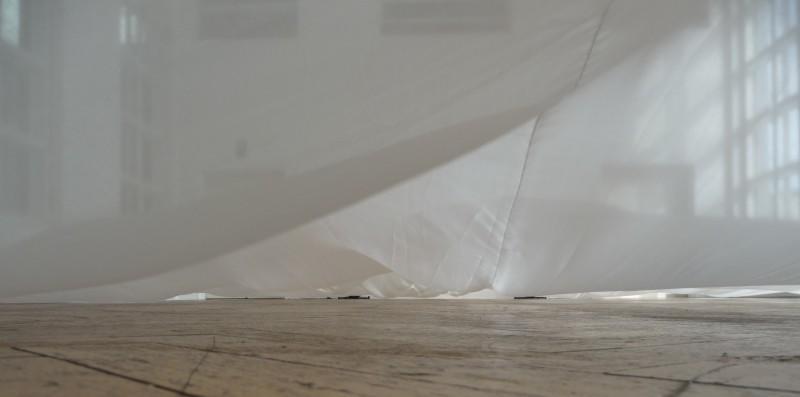
Gwangju
7th Gwangju Biennial
Various venues
September 5–November 9, 2008
This fall, Okwui Enwezor offers his own rethinking of the biennial format with a three-part exhibition. ‘On the Road’ is a roundup of exhibitions from the past year — an acknowledgment that globe- trotting biennial audiences miss many museum and gallery shows — including shows of Hans Haacke, Gordon Matta-Clark, and David Adjaye. ‘Position Papers’ consists of “curatorial proposals and experiments in exhibition practice” by an international group of five curators. Newly commissioned projects by artists such as South African photographer Jo Ractliffe, Cairo-based Iman Issa, and nouveau réaliste Jacques Villeglé — comprise ‘Insertions.’ In addition, the Gwangju Biennale presents Global Institute: Experiments in Transnational Education, a program focusing on topics such as how globalization has influenced artistic production and the current state of Asian art and institutions.
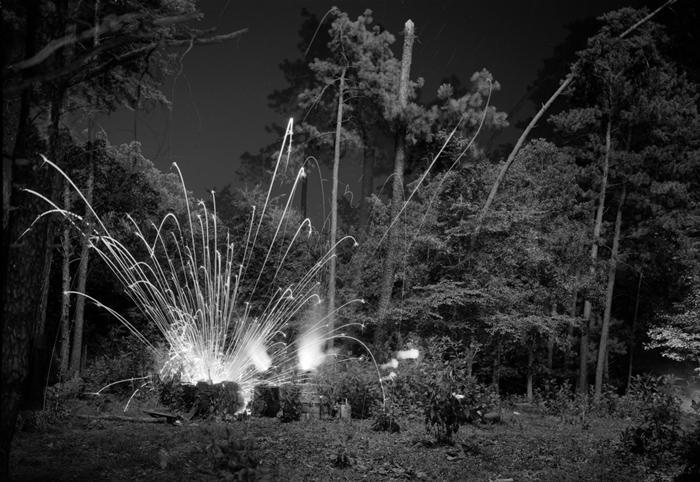
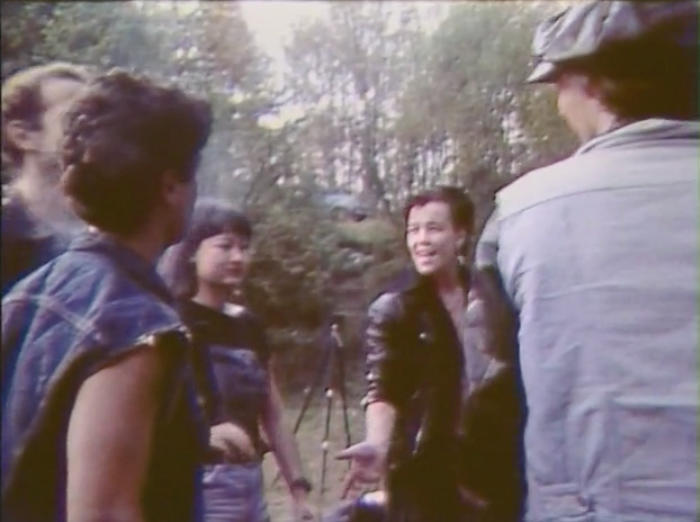
Annandale-on-Hudson
The Greenroom: Reconsidering the Documentary and Contemporary Art
CCS Galleries and Hessel Museum of Art, CCS Bard
September 27, 2008–February 1, 2009
It would be impossible to overstate the importance of the documentary in contemporary art, yet while it’s frequently touched upon in art criticism, little in the way of satisfying, in-depth investigations have been produced. To rectify this, CCS Bard and Berlin- based artist Hito Steyerl initiated a collaborative three-year research project on the subject. ‘The Greenroom,’ an exhibition curated by Maria Lind with related screenings and discussions, is its inaugural event. Although the larger project has a historical overview, this show of nearly sixty artists features work almost entirely made in the past few years, including some surprises alongside the expected. Especially considering that recent New York shows on more limited “subcategories” (the archive, surveillance) have proven somewhat disappointing, the scope of ‘The Greenroom’ is ambitious: from Stephen Shore’s colorful photo-travelogues to Walid Raad and the Atlas Group’s photographs of car bombs during the Lebanese civil war (My Neck Is Thinner Than a Hair); from Iñigo Manglano- Ovalle’s full-scale reconstruction of a supposed mobile biological weapons lab, as described by former US Secretary of State Colin Powell to justify the invasion of Iraq (Phantom Truck, 2007), to Michael Rakowitz’s well-traveled installation of looted Iraqi artifacts refashioned out of ephemera (The Invisible Enemy Shall Not Exist); from Marysia Lewandowska’s research into Polish amateur films to Omer Fast’s video installation featuring interviews with Polish extras from the Hollywood film Schindler’s List (Spielberg’s List, 2003). A new video by Rirkrit Tiravanija will be featured among the screenings.
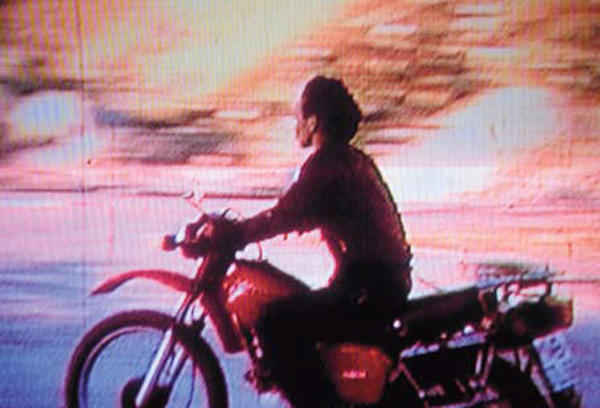
New York
Yael Bartana
PS1 Contemporary Art Center
October 19, 2008–January 19, 2009
The videos of Yael Bartana are testament to the extent to which politics — as identity, ritual, or whatever other form they take — infuse every aspect of life in her native Israel. King of the Hill (2003) documented men off-roading their SUVs, maneuvering up and down dunes of sand and dirt while others watched and cheered them on. Although the work was understated, the combination of the machismo, the tank-like vehicles, and the never-ending, slip-sliding, uphill battle formed an undeniable and powerful metaphor. Cars were also captured in a politicized moment in Trembling Time (2001), but there the ritual was prescribed by the state: sirens wailed to signal the start of a minute of silence to memorialize soldiers who had died in Israel’s wars, and drivers on a Tel Aviv highway came to a stop. No longer isolated individuals speeding through space, they were forced into a collective body. Construction in Palestine — an act intimately allied with Zionism — got turned on its head in Summer Camp (2007), as volunteers rebuilt the house of Abu Ahmed Al Hada, which had been destroyed by Israeli authorities. These last two videos, plus three more, will be featured in Bartana’s solo show at PS1 Contemporary Art Center, her first large-scale exhibition in New York.
Cambridge
Adel Abdessemed: Situation and Practice
MIT List Visual Arts Center
October 11, 2008–January 4, 2009
The highlight of Adel Abdessemed’s recent show at PS1 in New York was Birth of Love (2006), a video in which a cat devoured a rat — it was nasty, brutish, and, at one and a half minutes, mercifully short. Abdessemed has made numerous videos featuring animals — including boars, a lion, and a snake — in “performance” on the streets of Paris, where the Algerian artist now lives. (Some have proven controversial; earlier this year the San Francisco Art Institute suspended an exhibition of works by Abdessemed after animal rights groups objected to his “animal snuff films.”) His more explicitly political sculptures have included destroyed airplane fuselage and oversize drill bits, as well as neon signs placed above doorways that read “exil” in place of the usual “exit.” Abdessemed’s exhibition at the List Visual Arts Center will feature a mini-retrospective of his performative works, several new sculptural works, and, possibly, street actions in Cambridge itself.
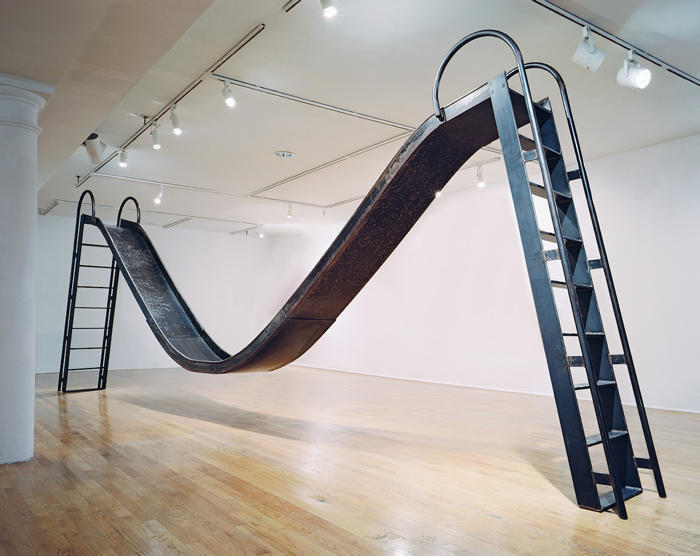
Singapore
Singapore Biennale 2008
September 11–November 16, 2008
Two years ago, the wealthy island nation of Singapore entered the international biennial circuit. Featuring enigmatic catchphrases such as “Let the enchantment begin” and “Intrigue your senses,” the Singapore Biennale website might read like the press release from a bureau of tourism, but the multi-site exhibition — organized around the theme of “wonder” and once again directed by Fumio Nanjo, who heads Tokyo’s Mori Art Museum — sounds impressive. While less sprawling than 2006’s program of more than ninety artists and artist collectives, this second iteration maintains the first’s mix of the international and the regional. The fifty- plus artists hail from all over the world, but more than sixty percent are from the Asia-Pacific region. Artist Shigeru Ban’s Containart Pavilion, constructed out of 150 shipping containers and his usual cardboard tubes, will hold installations by Ilya and Emilia Kabakov, Anthony McCall, and Hans Op de Beeck. A new art fair, Showcase Singapore, will premiere during the biennial’s opening days, and numerous museum exhibitions are scheduled for the following two months. As in 2006, the Singapore Biennale takes place at the same time as the Gwangju and Shanghai biennials; the ambitious art traveler can also catch the end of the Biennale of Sydney the week before and then visit the Yokohama Triennale afterward.
London
Nahnou-Together Now
Tate Britain
June 6–September 7, 2008
In 2005, the British Council and Tate Britain initiated an arts exchange program between teenagers in London and Damascus, and the resulting work was featured in the 2006 exhibition ‘Nahnou-Together’ (nahnou is the Arabic word for “we”). The endeavor soon expanded to include Jordan as well. The two-year dialogue that provided the material for ‘Nahnou-Together Now’ took place between sixty youths aged thirteen to twenty-one as well as teachers, Tate curators, and artists — Faisal Abdu’Allah and Maria zeb Benjamin, from Britain; Reem Al- Khatib, from Syria; and Samah Hijawi, from Jordan. On view alongside the participants’ creative efforts were two films that documented the workshops themselves. The London exhibition also attempted to contextualize somewhat the participants’ work (and that of the Syrian and Jordanian partner institutions, Adham Ismail Centre and Darat al Funun). The most important part of the show, however, may have been the encounters between the young Syrians, Jordanians, and Brits, from a wide variety of backgrounds, who traveled to each others’ countries and made art together.
Trentino, Italy
Manifesta 7
July 19–November 2, 2008
The latest edition of Europe’s itinerant biennial takes place in multiple locations in the southern Italian region of Trentino. The curators — Adam Budak, who lives and works in Graz, Austria, and Krakow, Poland; Berlin-based Anselm Franke and Hila Peleg (working as a team); and Raqs Media Collective, who live and work in Delhi — each organized an exhibition in Rovereto, Trento, and Bolzano, respectively, as well as collaborating on a show in Fortezza. Franke and Peleg’s The Soul (Or, Much Trouble in the Transportation of Souls) features “miniature museums” related to the history of Europe and the soul, conceived by a wide spectrum of contributors including artists Rabih Mroué, Natascha Sadr Haghighian, and Rosalind Nashashibi and anthropologist Michael Taussig (author of the field cult classic My Cocaine Museum and Walter Benjamin’s Grave). The group- curated ‘Scenarios,’ on the other hand, was inspired by its site, a fortress built in 1830 by the Hapsburgs and continually modified to prepare for a battle that never arrived. Sound installations, scripted by writers such as Arundhati Roy and poet Saadi Youssef, investigate how imagination and projection play as critical a role as the visible and material.
The last Manifesta, canceled due to political complications in Cyprus, turned into a roving educational platform that has appeared in Berlin and Mexico City and even taken up permanent residence at New York’s New Museum. It remains to be seen if the actualized Manifesta 7 will have such an afterlife.
Beirut
Walid Raad: A History of Modern and Contemporary Arab Art: Part I
Sfeir-Semler Gallery
July 17–November 8
Walid Raad’s first solo exhibition in the Middle East also marks the first public outing of a new project exploring the building blocks of an infrastructure for the fine arts in the Arab world. ‘A History of Modern and Contemporary Arab Art, Part I, Chapter 1: Beirut, 1992-2005’ features six new works that use materials about the emerging arts industry as elements of unabashedly formalist images.
But as one might expect from Raad’s work, there are numerous layers beneath the artist’s overt consideration of the political, economic, and ideological motivations behind branding geographic locales with culture. The starting point of Raad’s current project is the artist and theorist Jalal Toufic’s concept of the “withdrawal of tradition past a surpassing disaster.”
One work in particular, a wall mural painted with help from local art students, reproduces but rakishly distorts fellow artist Walid Sadek’s 2006 installation Love Is Blind. In that work, Sadek tried to access the early twentieth-century Lebanese landscape painter Moustafa Farroukh but failed. In this work, Raad tries to access Sadek trying to access Farroukh. The underlying questions here are: first, how has art been materially and immaterially affected by wars in this part of the world; second, how might artists in the region begin to reference each other again, and invest with meaning artworks that are contingent on other artworks (as opposed to civil wars); and third, how might a productive art historical lineage proceed from here?
London
Farhad Ahrania: Stitched
Leighton House Museum
August 13–September 6, 2008
‘Stitched’ is Shiraz-born artist Farhad Ahrarnia’s first show in London. It includes photography, video, and a series of embroideries-on-canvas, in which the artist sews stitches in bright threads over blurred images of modern-day media “celebrities” — from Iranian ex-royalty to young Britons suspected to have taken part in riots and American soldiers killed in action in Baghdad. “By embroidering the grid-like canvas, he undermines the autonomy of his chosen subjects, interrupting their sense of completeness and permanence,” writes curator Rose Issa. “The act of pulling thread through the fabric is a literal and metaphorical attempt to pull hidden meanings from within the images.” Ahrarnia’s work in video includes Mr Singer, inspired by Sergeant zinger, a character in Simin Daneshvar’s novel Savushun, who acted as a neighborhood spy while selling Singer sewing machines to affluent Iranian families in the 1930s and 1940s.
Doha
Amir Fallah
The Third Line
September 25–October 25, 2008
In this solo show at The Third Line’s new branch in Doha, California-based Amir Fallah teases out a long-standing preoccupation in his work. In his previous series of paintings of boys’ camps and dens, shown in 2007 at The Third Line (with Ala Ebtekar), it was the background horizon and stormy skies that dominated; now he turns to the landscape itself in a series that takes on iconic Hollywood-esque scenes of the desert and canyons of the Wild West. As ever, Fallah’s modish titles refer to a contrived, emotional personalization of nature, but his work has taken on a newly expressive, even whimsical quality — a far cry from his tightly controlled, poppy canvases of a few years back.
Amman
Mona Hatoum
Darat Al Funun
October 11, 2008–January 8, 2009
Amman’s erstwhile creative hub Darat al Funun hosts London-based artist Mona Hatoum in residence throughout September. Come October, she’ll open an exhibition of new work created in Amman with local artisans and materials, shown alongside older works that form part of the Khalid Shoman Private Collection. These include iconic works, from the 1983 video installation So Much I Want to Say to 2007-08’s Misbah, a rotating lamp that throws military shadows onto the walls. Hatoum’s exhibition is accompanied (in Darat’s Blue House gallery) by Return of the Soul, an installation created by Scottish artist Jane Frere and volunteers from refugee camps in Palestine, Jordan, and Lebanon, to mark the 60th anniversary of the Nakba. The work, made up of hundreds of ghostly wax figurines, was originally shown at the Palestinian Art Court, Al Hoash in East Jerusalem in May 2008, and tours to Ramallah and Edinburgh before Amman.
Beirut
Ayam Beirut Al-Cinema'iya
October 16-24, 2008
Beirut’s fifth Ayam Beirut al-Cinema'iya (Cinema Days of Beirut) is still gathering submissions from regional filmmakers, but this year it could be all about the sidebars.
The defiantly grassroots festival is presenting a retrospective of films by Abdellatif Kechiche (La Faute à Voltaire, L’Esquive, La Graine et le mulet), and the feted Paris-based director leads a workshop with actresses Élodie Bouchez, Sarah Forestier, and Hafsia Herzi. Forums on developing independent cinema and establishing a Lebanese film fund run alongside a pitching session for documentary filmmakers. And an exhibition of Egyptian movie posters marks the 100th anniversary of the industry. The festival closes with the Middle East premiere of Cannes favorite Je veux voir (I Want to See) by Joana Hadjithomas and Khalil Joreige, starring festival guest Catherine Deneuve. Elsewhere in the Arab world’s post-Ramadan festival splurge, the Beirut International Festival runs October 1–8 while Abu Dhabi’s international industry talkshop, the Middle East International Film Festival, will be held on October 10-19.
Dubai
Project Muisaq
Traffic
November 13-December 4, 2008
The Khatt Foundation, innovators in Arabic typography, ran a competition during the summer, charging its members with developing designs for large-scale vinyl wall art (the latest trend in interiors, produced by specialist sticker company Mosaiques). The twenty shortlisted designs are being selected by a jury that includes Khatt Foundation director Huda Smitshuijzen AbiFares, traffic design gallery owner Rami Farook, artist and designer Nadine Kanso, and furniture designer Nada Debs. Works will be exhibited and sold at traffic in November as limited editions.
Dubai
Khosrow Hassanzadeh
B21 Gallery
November 11–December 11, 2008
“Ya Ali madadi” is the phrase pahlavans — traditional Iranian wrestlers or strongmen — utter before attempting a particularly strong weight, calling on Ali’s assistance. In his first solo show at B21 gallery, Khosrow Hassanzadeh presents a new series of silkscreen prints of the zurkhaneh (gymnasium), overlaid with words and images in acrylic, titled and inspired by the adage. These new works on paper — far more dense and layered than his previous works on this theme — will be displayed alongside a series of open-sided boxes, each featuring a painted backdrop of pop icons (the exiled singer Googoosh, more pahlavans), surrounded by twinkling lights, jewelry, flowers, and other treasures from the bazaar, in a kind of ironic shrine to iconography.
Dubai
Huda Lutfi
The Third Line
November 13–December 3, 2008
Cairene artist Huda Lutfi is known for her exploratory, playful practice. Working as something of an urban archaeologist, she reworks and repositions found objects. Her first solo show at The Third Line is a homage to Umm Kulthum. Alongside installation and sculptural objects, it includes a series of collages that play with classic Kulthum iconography — the legendary singer’s hair in a low bun, black clothes, a string of pearls. The exhibition also marks the publication of a new book about the artist, published by the gallery.
London
Kader Attia
Albion
November 19, 2008–January 9, 2009
Kader Attia continues his exploration of “emptiness” — developed through recent works such as _Ghost, an installation of 150 kneeling, faceless figures made from silver foil — in this show of new work at Albion’s London gallery. Attia relates the “post-utopist, post-ideological, post-belief” current era to 1950s France and its battles in Indochina and Algeria amid the stagnating atmosphere of the Cold War — a time that led Yves Klein to consider “the nature of the void.”
The November show includes video, sculpture, and installation (using plastic bags and a “beer can crowd,” along with other materials) and seeks to re- appropriate the bombastic language of globalization, refashioning it on a poetic and personal level as a discourse relevant and accessible to those outside the West. The exhibition is accompanied by a new book published by Albion with an essay by Octavio zaya.
Doha
Museum of Islamic Art
Opens November 22, 2008
Qatar’s Museum of Islamic Art is the sole survivor — at least for the moment — of the raft of supermuseums announced four years ago by Sheikh Saud Al-Thani, and it’s almost been opened several times over the past two years. Still, by all reports, the MIA was worth the wait: while the interiors are being kept under wraps, the exterior of IM Pei’s project is stunning, and the collection of Islamic art and artifacts — built up over the past decade at vast expense — is known to be one of the most significant in the world. The collection’s seven hundred objects, spanning three continents and thirteen centuries, are housed in galleries that circle a five- story-high domed atrium, inspired, said the architect, by the “austerity and simplicity” of the thirteenth-century sabil (ablutions fountain) of the Ibn Tulun Mosque in Cairo. The MIA’s opening exhibition, ‘Beyond Boundaries — Islamic Art Across Cultures,’ is a collaboration with around twenty international institutions, each of which has loaned a single object.
The education wing includes a library, classrooms, and workshops, plus the region’s first conservation laboratory. Other developments in the pipeline include the Museum of Modern Arab Art, home to six thousand works (and growing) collected by Sheikh Hassan Bin Mohammed Al-Thani. It moves into a temporary space in 2009 and should have its own home by 2012.